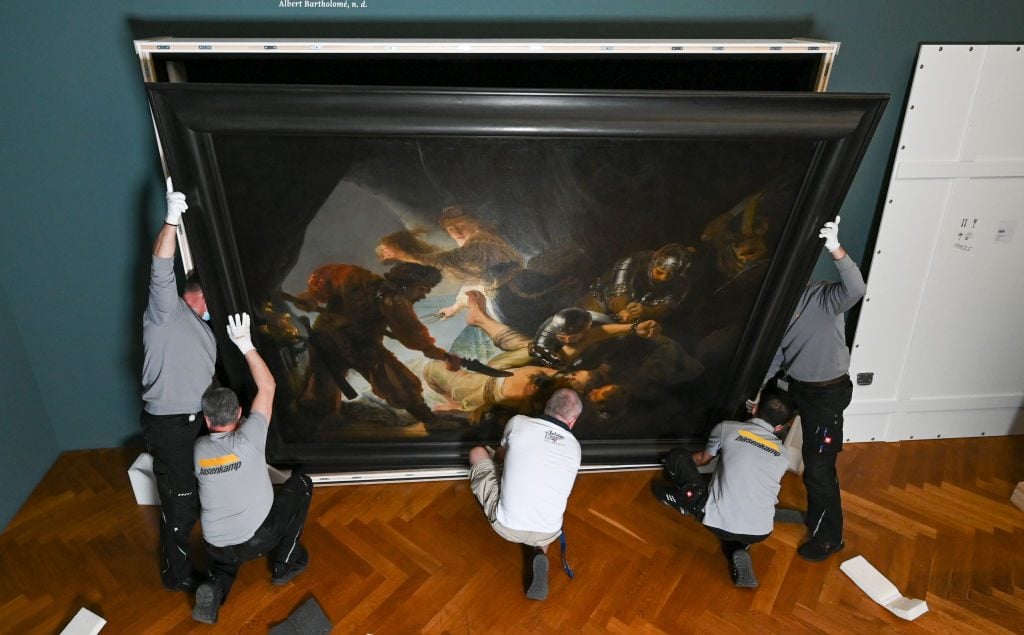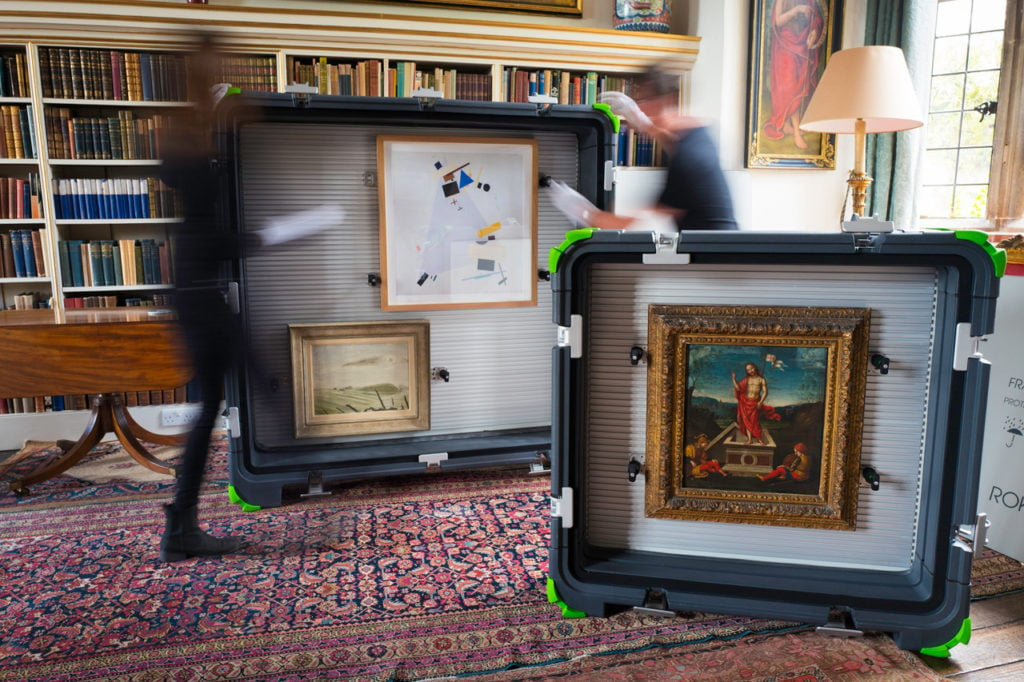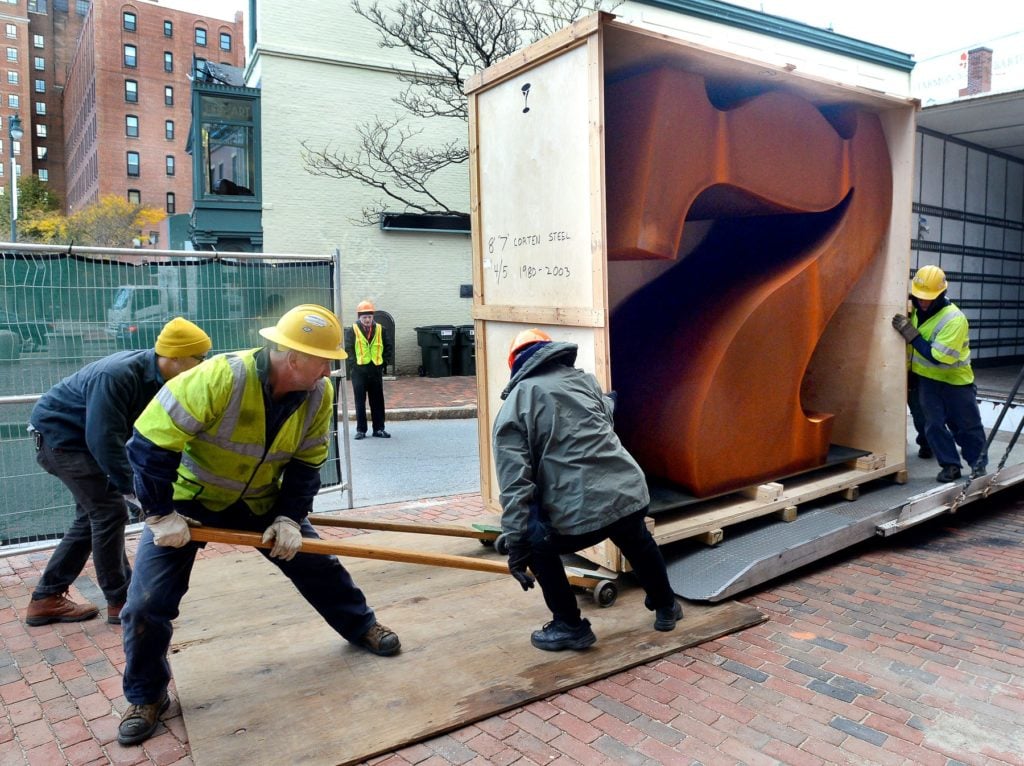Artnet News Pro
Want to Clean Up Your Gallery’s Carbon Footprint? Start With Your Packing Materials. Here Are Some Tried and Tested Tips From the Pros
Many of these eco-friendly strategies will also save you money.

Many of these eco-friendly strategies will also save you money.

With so many galleries, artists, and auction houses rushing to make promises to be carbon neutral in the coming years, one might hope that the art world is suddenly more aware of its environmental impact. Yet the truth is, great promises and good intentions aside, lowering your carbon footprint is not just about signing up for ecological groups or even about how many flights your staff takes alone. It is not only about how your art travels. It comes down to the nitty gritty details, like what your art is wrapped in.
While it might seem like a low priority, galleries should actually start cleaning up their art storage first, because it only requires a little bit of research and some key product swaps. And luckily, environmental advocacy groups have already done much of the legwork, making it quite easy to understand how the art world can cut back on waste.
Many of these strategies will also save you money. “Efficient material use means less material goes in your shopping cart which means less money spent,” write the authors of Ki Culture, an advocacy group that has authored a comprehensive booklet on sustainable waste management for the art world, which you can download here. The Gallery Climate Coalition (GCC) has also released easy-to-read guidelines for packaging, as well as shipping and waste disposal on their website.

Art handlers at Sotheby’s. Photo by Denise Truscello/Getty Images for Sotheby’s)
Cliodhna Murphy, head of environmental sustainability at Hauser & Wirth, tells Artnet News that galleries should think about “waste hierarchy,” a concept developed by Ki Culture. “The first step is to ‘refuse’ packaging where possible,” Murphy says. Beyond that, she has worked together with other members of the GCC to come up with a list of no-go items, including polystyrene, styrofoam, and single-use plastics.
Galleries should start their carbon cleanup efforts by choosing one or two items to stop purchasing entirely. For example, London dealer Kate MacGarry, an active member of the GCC, transitioned her gallery away from bubble wrap entirely.
Sarah Titheridge, director and art technician at ArtTechSpace.com, has sworn off of packing peanuts for more than a few reasons. “Even the compostable packaging peanuts are just a bad idea since you end up putting them into plastic bags when decanting them, wasting another material to store the packaging, which is bonkers,” she says. On top of that, packing peanuts are actually not very good at securing sculptures, Titheridge adds.
Beyond “refusal,” Ki Culture has four other words that preparators should keep in mind: reduce, reuse, repurpose, and recycle—in that order. “Unfortunately, recycling cannot be relied on to fix our waste problem, and should always be considered as the final option,” says Aoife Fannin of the GCC.
But if you must use some products that are not environmentally friendly, like bubble wrap, make sure you reuse them as much as possible and dispose of them properly, says Kim Kraczon, who helped author the manuals on packaging for the GCC and Ki Culture.
“It’s imperative to maintain bubble wrap’s function as a packing material for as long as possible by preventing tears and damage to the material,” she says. “Securing bubble wrap mechanically around the artwork with ties or using easy-to-remove adhesive tapes minimizes damage to the plastic and encourages its reuse.” She points to the GCC Packaging & Materials guideline, which she says takes “the guesswork out of choosing the appropriate adhesive tape for bubble wrap with a handy table that identifies compatibility with an array of packaging materials.
Pro Tip: Kraczon says that for works that need less protection, “thick blankets secured with tension straps—possibly in conjunction with reusable corner protection—can also serve as a suitable replacement.”

Dietl International is among several shipping companies beginning to offer RokBox.
Titheridge thinks paper tape could and should be the standard over vinyl-backed adhesives, which tend to dominate the art industry. “Paper tape can be recycled, reused… the glues don’t fail as quickly, so they are less likely to be replaced,”she says. “Plus it looks nicer.”
Many dealers and art technicians also frequently recommend using recycled cardboard, which is not significantly more expensive or harder to find than the standard kind. Beyond this, there are many new packaging products on the market that are reusable—but don’t get seduced by reusable plastics, because they are still, in the end, plastics.
For smaller works, Kvatt makes reusable envelopes—crucially, the company accepts returns for their products when they get worn out, and will fix them for you so they can continue to be used.
Jennifer Chert, a co-founder of GCC Berlin and co-owner of gallery Chert Lüdde, recommends a different combination for framed works: cardboard packages lined with cotton bags instead of plastic materials of any kind. “We use some shredder paper from the office inside crates and re-use all cardboard envelopes for shipping books,” she adds.
Pro Tip: Sean Harrison, secretary of the board of PACCIN (the Preparation, Art Handling, Collections Care Information Network) and director of exhibitions at the Witte Museum in San Antonio, suggests trying out yoga foam blocks instead of using volare, carpet, and ethafoam to stage works or vitrines during the setup or take down of a show. “These are dedicated purpose, reusable, distinct color, very clean and cleanable, closed foam inert, and off the shelf padding solution great for temporary placement of valuable and delicate frames or vitrines in gallery,” he says. Better quality materials like this have a much longer lifecycle.

Workers moving a Robert Indiana sculpture. Photo by John Patriquin/Portland Portland Press Herald via Getty Images.
Things that may seem insignificant can really make a difference in minimizing waste turnover. Frame corners, gloves, and packing tape are among those small items that can add up over time.
Washable fabric gloves are a great option and an easy switch from the one-time use vinyl pairs. There are also biodegradable glove brands, but make sure you dispose of them properly. As the authors of Ki Culture’s waste management book warn, some organic compounds can be volatile and harmful to plant and animal life.
Carolin Leistenschneider, a partner at Berlin gallery Haverkampf in Berlin, is a founding member of the GCC Berlin chapter, which was created to allow GCC members to source and share resources locally. This is essential, she says, because smaller distributors will have smaller footprints compared to giants like Amazon, so she orders all her packing materials from the Germany company BioBiene.
Pro Tip: Have you heard of water-activated tape? Haverkampf gallery now swears by it as an alternative to self-sealing paper or plastic tape. “It forms an organic bond with the cardboard on the adhesive strip, which is not only safe but also 100 percent recyclable,” Leitschneider says. She buys one that is manufactured in Europe, but here is a great option made by EcoEnclose for those in the US.
Harrison hopes that modular crates and crate trays become “the most common practice, thereby reducing and reusing components more often.” There are some excellent brands out there already that are slowly but surely growing in popularity, like Turtlebox.
“The Turtles constructed in 1994 [the year the company was founded] are still in use,” says Nicole van Eerdt, service and delivery manager at the Dutch company, which provides its products to museums and galleries worldwide. The boxes have a minimum lifespan of 25 years.
“There are instant benefits,” she adds. “We do not need to construct a crate, which saves time, labor and materials.” And because the modular boxes can be easily adjusted, that means that there is no need to do a site visit to assess and measure an artwork, which also cuts back on carbon output.
The savings in materials is quantifiable. “One Turtle in use for more than two decades means that no wooden crates are required to transport artworks, making a saving of at least two trees a year for each Turtle,” van Eerdt says. The company has also innovated the afterlife of their boxes: the insulation is recyclable and the outer shell can be reused.
Pro Tip: Packaging material—and art, for that matter—is only as eco-friendly as the way it gets to you, how far it has to travel, and on what kind of transport. Updating your packing process is just the first step.